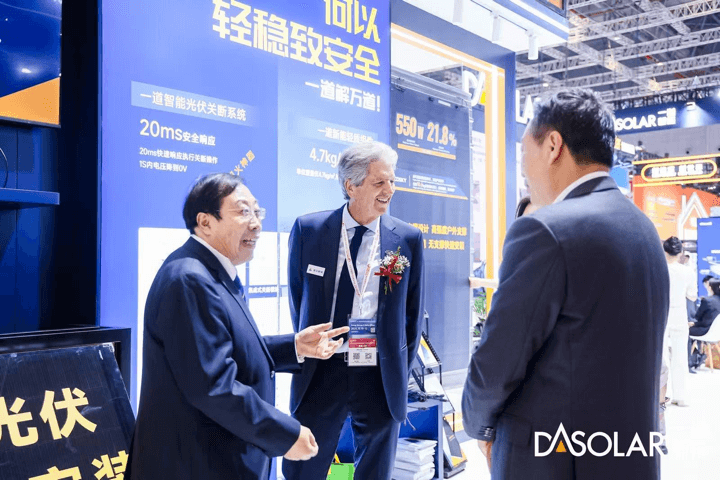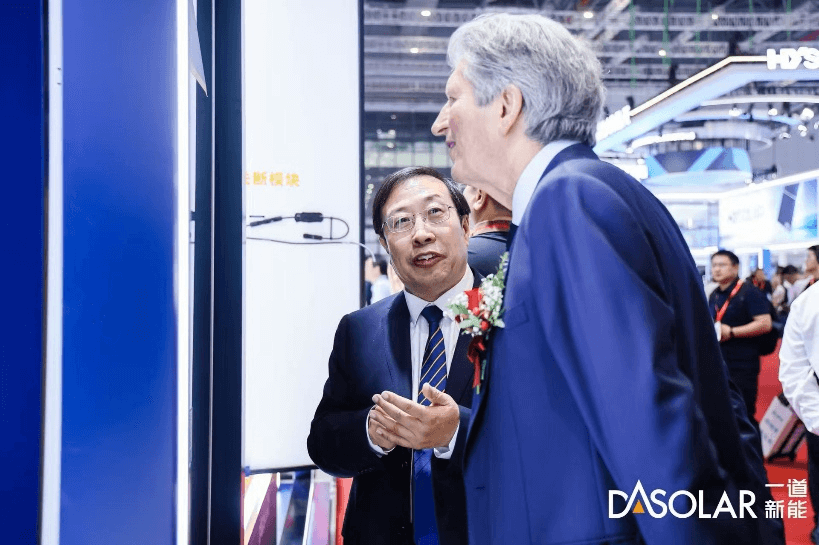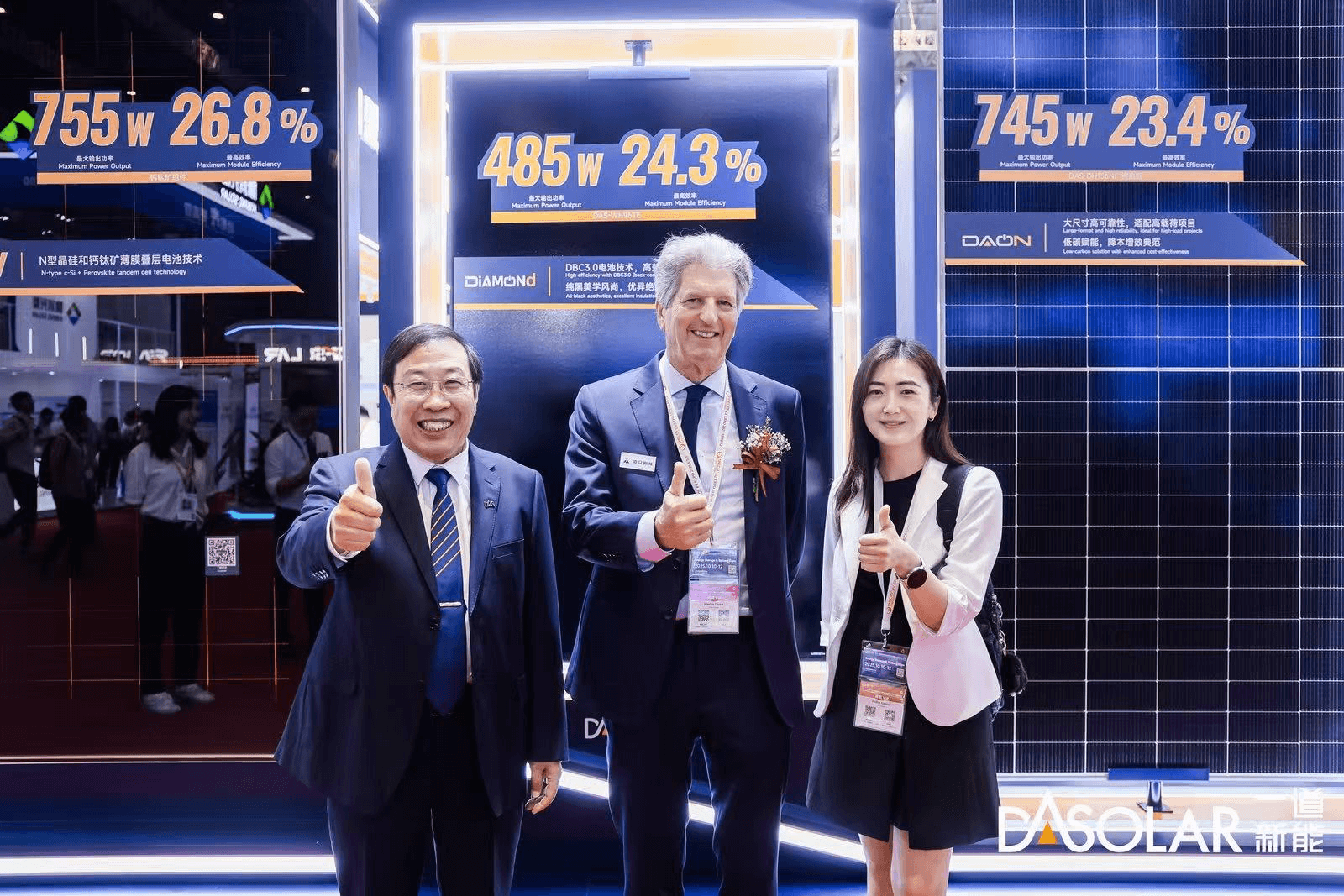Professor Martin Green Visits DAS Solar at SNEC 2025 to Explore PV Innovations
2025-06-16
Shanghai, Jun. 16, 2025 - During SNEC, the world-renowned photovoltaic expert and “Father of Solar Cells” Professor Martin Green of the University of New South Wales (UNSW) visited the booth of DAS Solar alongside his research team. DAS Solar Chairman and CEO Mr. Yong Liu and CTO Dr. Dengyuan Song welcomed Professor Green and held in-depth discussions on the company's latest breakthroughs in N-type technology and the future of PV innovation.

Mr. Liu and Dr. Song provided a detailed overview of DAS Solar's recent R&D progress under its “One Core, Three Branches” technology roadmap. They first introduced the newly released TOPCon 5.0 cell technology, which incorporates innovations in structure, mechanisms, materials, processes, and fundamental principles, reaching a mass production cell efficiency over 27%, an open-circuit voltage of over 746 mV, and module efficiencies above 23.8%. The company has also made significant progress in improving UVID resistance—a common issue in TOPCon modules—reducing UVID 120 degradation to below 0.8%, demonstrating its leadership at the cutting edge of N-type technology.
Building upon TOPCon's passivated contact platform, DAS Solar has developed its 3.5-generation Diamond series back-contact (DBC) technology. The enhanced DBC 3.0 Plus solution integrates multiple advanced techniques including high-precision patterning, P/N hybrid passivation, 0BB metal interconnection, embedded bypass diode design, and black silicon texturing, pushing open-circuit voltage to 747 mV and module efficiency exceeding 24.8%.
DAS Solar has also made strides in tandem cell development. In collaboration with perovskite leader Extreme Photonics, the company has successfully developed TSiP 2.0, a four-terminal perovskite/TOPCon tandem cell solution. By combining a semi-transparent wide-bandgap perovskite top cell with a TOPCon 5.0 cell, DAS Solar achieved a module efficiency of 26.8% and output power of 655W on a large-area 2.82m² module, which is now ready for mass production.

In the follow-up technical exchange session, Professor Green's team introduced several cutting-edge research projects underway at UNSW's PV laboratory, including advancements in passivated contacts for N-type solar cells and innovations aimed at further improving conversion efficiency. They also outlined the lab's future focuses, namely high-efficiency tandem architectures and next-generation photovoltaic materials, while offering a broad perspective on global PV technology trends.
Both sides shared views on the opportunities and challenges faced by different technological pathways, particularly in terms of cost reduction, mass production, and commercial scalability.

Dr. Song provided a forward-looking overview of DAS Solar's research roadmap. He emphasized that the company will continue to focus on its “One Core, Three Branches” strategy, further evolving TOPCon technology, expanding DBC cell applications in niche markets, and accelerating R&D investment in tandem cells. He also expressed DAS Solar's commitment to deeper collaboration with Professor Green and the UNSW PV lab, especially in areas such as new passivation materials, cell design and simulation, and technology transfer.
Looking ahead, DAS Solar and UNSW will continue to strengthen their partnership in both R&D and industrial application, jointly advancing innovation across the value chain. Together, they aim to drive the integration of research, production, and application, contributing to global energy transition goals and the pursuit of a net-zero future.






 浙公网安备33080302000236
浙公网安备33080302000236